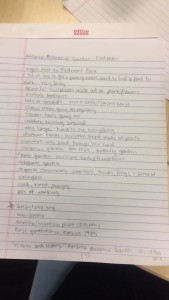In Bazelon’s article, “Making Bathrooms More ‘Accommodating’”, states that as transgender people are becoming more common, their decision on which bathroom to use has not gotten any simpler. Because of the long history of separate bathroom facilities, it has proven difficult to change society’s way of thinking in their design.
Transgender people and their supporters are rallying for the redesign of male and female bathrooms. This movement, however has created a large opposition. It has been proven difficult to people to begin to truly view transgender women as women and men as men. In Houston, a campaign has been going on called the “bathroom ordinance”, which strongly opposes the mixing of gender bathrooms and locker rooms. Some oppose the change because they view the female bathroom as a “relaxing ‘all-female enclave’” and do not want to give that up to share with men.
Although many people do not agree with this movement, places such as public schools have met the needs of their transgender students by allowing them to select the gender they most identify with and allow them to participate in all school activities as their chosen gender.
In the debate about bathrooms, many have used the word “accommodate”, which has been taken as a derogatory term to some because it points out that these people are different or not normal. Others take the word to mean that society is beginning to change and starting to meet the needs of the country’s transgender people. Resources are available to transgenders to help them show others that they are indeed in the right restroom, by using tactics such as showing off certain features on their bodies.
Bazelon states that any kind of accommodation is a positive move forward for transgender people and even the discussion of “accommodation” is healthy. Slowly changes are being made in the right direction for transgenders, and all they can do right now is prove that they belong where they believe that they do.
Bazelon, Emily. “Making Bathrooms More ‘Accommodating’.” The New York Times. The New York Times, 21 Nov. 2015. Web. 1 Mar. 2016.






